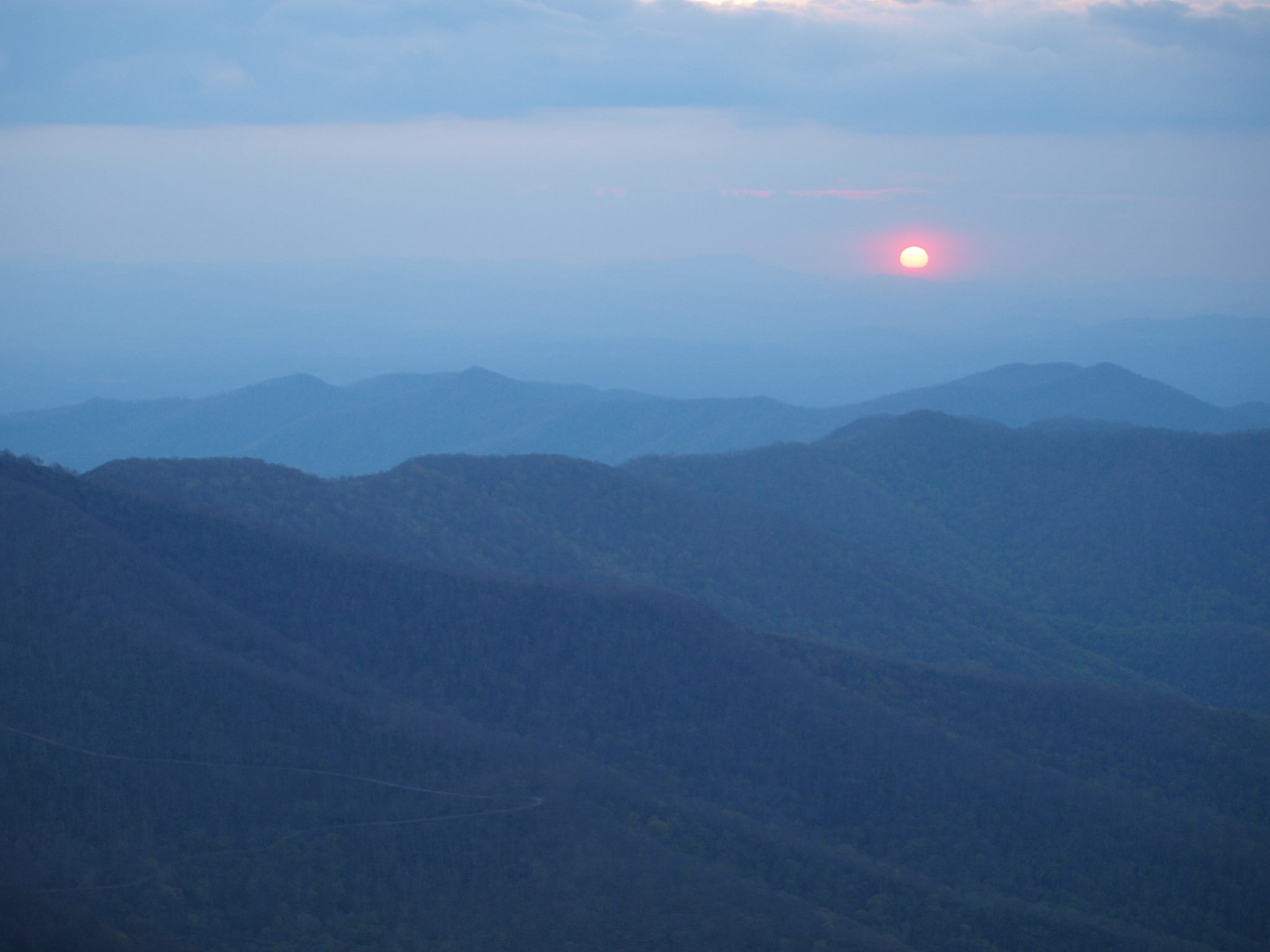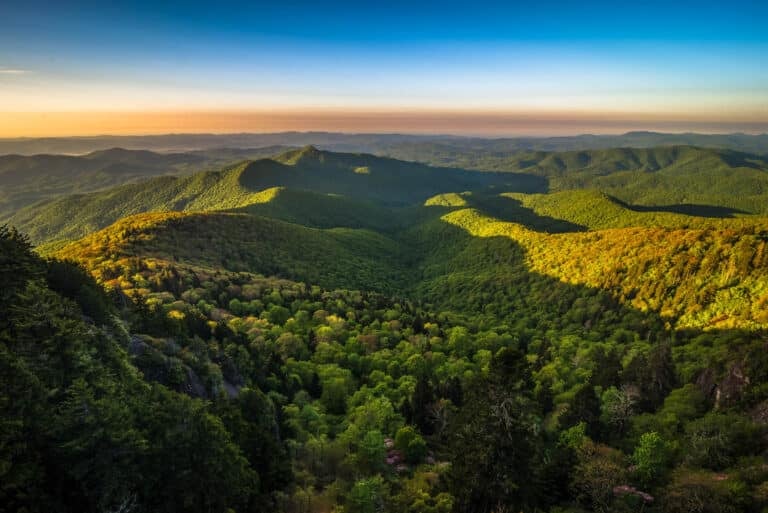You might as well ask me why the sky is blue, Irene Soderquist. Actually, you are, in a way. The two questions are not as far apart as you might think. The famous blue haze suffusing the Blue Ridge Mountains is not an actual mist but rather a combination of physics, chemistry, and biology. It’s all a matter of perception when you get right down to it.
First, a physics lesson. Thanks to Sir Isaac Newton, we know that the white light from the sun is really a combination of several different colors. One of the first science experiments many of us perform as children is to use a prism to separate the colors of light into a spectrum. When the colors of light form a spectrum, they always arrange themselves in this order: red, orange, yellow, green, blue, indigo, and violet (remember ROY G. BIV?). These are the colors visible to the human eye. Each color has a different wavelength, with red having the longest, and violet, on the other end of the spectrum, having the shortest.
A quick detour into biology tells us that the color receptors, or cones, in the retinas of our eyes respond best to the wavelengths of three colors of light-red, green, and blue. This reception is what gives us our color vision.
So why doesn’t the sky appear red to us? We can thank Lord Rayleigh, who in the 1850s, explained why. He found that solar light passing through the atmosphere is broadly scattered before our eyes perceive it. Light passing through a medium containing small particles scatters the shorter blue wavelength more strongly than the red. This selective scattering is now known as Rayleigh scattering.
Later scientists (including Alfred Einstein, who settled the matter in 1911) concluded that the small molecules of oxygen and nitrogen in the air are more effective at scattering shorter wavelengths of light-the blue and violet end of the spectrum. Since our eyes are not as sensitive to violet, the sky appears blue when you look up through the prism of air that constitutes our atmosphere.
But you asked why our mountains-which are made up of many colors-appear blue. The blue-sky principle still holds: when you view a dark, solid object, such as a mountain, from a distance, the scattered light makes it appear blue. Yet the distinct blue haze of the Appalachians can also be attributed to the thick vegetation that blankets the slopes. Tiny hydrocarbon particles, including terpenes from pine trees, are released by plants. The particles react with natural ozone molecules to produce a hazy effect over the mountains. Again, the small size of the particles means that the light scatters blue. The Blue Ridge is not unique in this respect. This effect occurs in other mountain ranges around the world, including the Blue Mountains in Australia.
Unfortunately, man-made particles have entered the picture. It’s no secret that, due to air pollution, visibility in the Blue Ridge has degraded significantly in the last 50 years. Sulfur dioxide and nitrogen oxide particles from coal-burning power plants, other industry, and from automobiles, mix with the ozone to form a grayish haze that reduces visibility. Sulfate haze may even interfere with the natural terpenes released by certain trees, further diffusing the blue color of the mountains. Unless we continue to improve our air quality, perhaps the Blue Ridge Mountains will be known to future generations as the Gray Ridge. Somehow, that doesn’t connote quite the same air of beautiful mystery.








